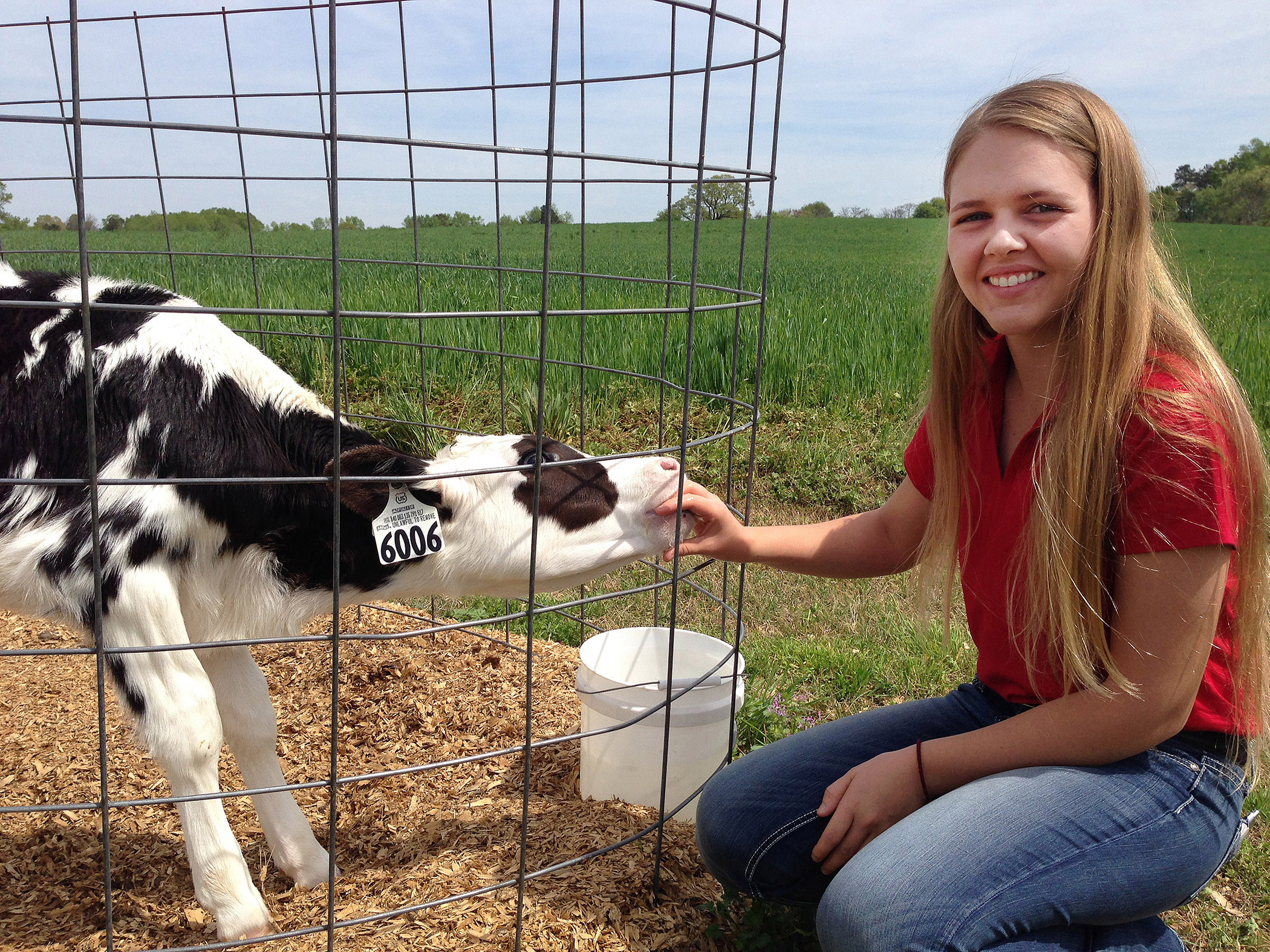Many college students become nannies during school to help ends meet, but Kayla Alward, a rising fourth-year student at UGA, prefers to cow-sit.
Alward, a Guyton native majoring in animal and dairy science in UGA’s College of Agricultural and Environmental Sciences, works as the calf caretaker at the CAES Teaching Dairy. The job of making sure the dairy’s dozens of calves are safe and healthy sometimes runs 24 hours a day, and her dedication to her charges earned her this year’s Student Employee of the Year award from the UGA Career Center.
Alward was also the winner of the Southern Association of Student Employment Administrators’ Student Employee Award, part of the SASEA regional competition, which covers student employees from 12 states. This is the first time a UGA student has won the regional award. She was presented with a check for $1,000 from SASEA along with two plaques representing her UGA and regional wins.
As a student worker at the teaching dairy, Alward oversees the daily care of the calves, creates the schedules for other students who work at the dairy and develops treatment protocols for ailing calves.
“In other words, she is in charge of the next generation of the UGA Dairy Farm,” said Mike Mathis, farm manager at the UGA Teaching Dairy. “This next generation currently exists as a group of newborns that require twice-daily bottle feeding, constant monitoring, attention to detail and willingness to make tough decisions.”
Mathis and Jillian Fain Bohlen, an assistant professor of animal and dairy science who uses the dairy for classes and for research, nominated Alward for the award. For Mathis, it was fall 2015 when Alward’s dedication to the dairy’s Holsteins became fully evident.
A disease swept through the dairy’s calf population, and Alward worked day and night treating her calves and nursing the ones she could back to health. She worked with UGA veterinarians to develop treatment programs for the calves and new biosecurity protocols to prevent that kind of outbreak from happening again. This included developing new treatment methods and new calf-worker routines as well as implementing a biosecurity program and strategic design methods to reduce the spread of the illness.
“Few other student employment opportunities require this level of dedication and heart,” Mathis said. “Punching in and out of the clock did not matter to Kayla; these calves were her responsibility and she stayed the course unrelentingly.”


